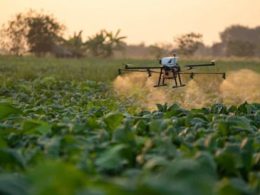Soil health is a critical component of sustainable agriculture, and its importance is increasingly recognized by policymakers and practitioners. In the United States, soil health is a key aspect of the 2018 Farm Bill, which emphasizes the need for conservation and sustainable agriculture practices.
Despite this recognition, there is a need for a comprehensive review of the current state of soil health in the United States and the policies and programs that support it. This article provides an overview of the current state of soil health, the policies and programs that support it, and future directions for improving soil health.
Soil health is a complex and multifaceted issue, and its importance extends beyond agriculture to environmental and human health.
The United States has made significant progress in recent years in improving soil health, with the adoption of conservation tillage, cover crops, and other sustainable agriculture practices. However, there is still much work to be done to address the ongoing challenges facing soil health, including soil erosion, nutrient depletion, and climate change.
As the world’s population continues to grow, the need for sustainable agriculture practices that prioritize soil health will only continue to increase.
The future of soil health in the United States will depend on the development of effective policies and programs that support sustainable agriculture practices and promote soil health.
One potential approach is to incentivize farmers to adopt sustainable agriculture practices through programs such as the Conservation Reserve Program (CRP) and the Environmental Quality Incentives Program (EQIP). These programs provide financial and technical assistance to farmers who adopt conservation practices, such as cover crops and conservation tillage.
Another approach is to promote soil health through education and outreach programs that raise awareness about the importance of soil health and provide farmers with the knowledge and skills they need to adopt sustainable agriculture practices.
The United States Department of Agriculture (USDA) has taken steps to promote soil health through its Natural Resources Conservation Service (NRCS) and the Agricultural Research Service (ARS). The NRCS provides technical and financial assistance to farmers who adopt conservation practices, while the ARS conducts research on soil health and sustainable agriculture practices.
As the world’s population continues to grow, the need for sustainable agriculture practices that prioritize soil health will only continue to increase.
The future of soil health in the United States will depend on the development of effective policies and programs that support sustainable agriculture practices and promote soil health.
By working together, policymakers, farmers, and other stakeholders can promote soil health and sustainable agriculture practices that benefit both the environment and human health.









